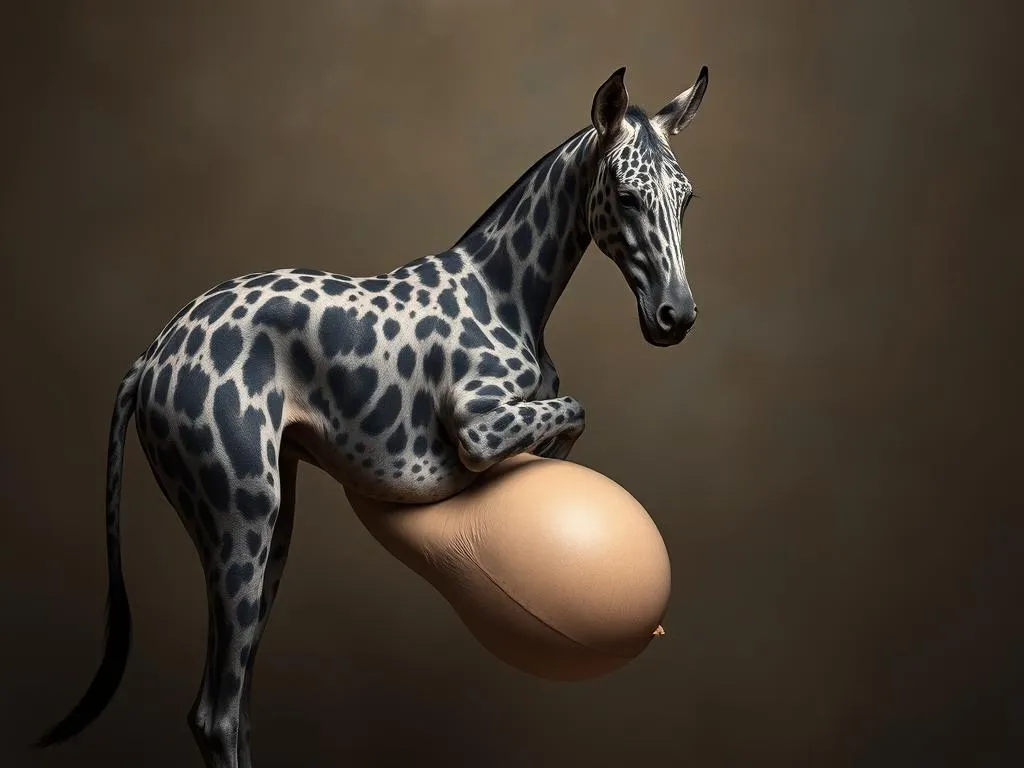
Introduction
Dog health care is an essential aspect of responsible pet ownership, particularly for large breeds like the Great Dane. Known for their impressive size and gentle temperament, Great Danes require special considerations, especially during pregnancy. Great Danes are not just large dogs; they come with unique health challenges that necessitate proper care and attention.
In this article, we will explore various aspects of Great Dane pregnancy, including how long they are pregnant, what to expect during this time, and how to ensure both the mother and her puppies remain healthy throughout the gestation period. Understanding these factors is crucial for anyone looking to breed or care for a Great Dane, as it equips owners with the knowledge to provide optimal health care during this vital phase of their dog’s life.
Understanding Great Danes
Breed Characteristics
Great Danes are one of the largest dog breeds, with males typically weighing between 140 to 175 pounds and females ranging from 110 to 145 pounds. Their towering stature can reach up to 34 inches at the shoulder. However, their size isn’t the only concern; Great Danes are prone to specific health issues, including hip dysplasia, bloat, and heart problems. Ensuring regular veterinary visits and proper nutrition can help mitigate these risks.
Reproductive Traits
Great Danes reach reproductive maturity around six months of age, but responsible breeding typically starts later—between 18 to 24 months. Understanding the differences between male and female Great Danes is also essential. Males are generally larger and can be more territorial, while females tend to have a nurturing disposition, particularly when pregnant.
Canine Pregnancy Basics
Dog Pregnancy Timeline
The typical gestation period in dogs averages around 63 days, but it’s essential to understand that this can vary slightly based on individual circumstances. Canine pregnancy is divided into three trimesters:
- First Trimester (Days 1-21): The embryos implant in the uterus, and the mother may not exhibit noticeable physical changes.
- Second Trimester (Days 22-42): The embryos develop rapidly, and physical changes become more apparent, such as weight gain.
- Third Trimester (Days 43-63): This is the final stage before whelping, characterized by significant weight gain and behavioral changes.
Importance of Prenatal Care
Prenatal care is crucial for the health of both the mother and her puppies. Regular check-ups with a veterinarian can help monitor the pregnancy’s progress and address any potential complications. Common practices include providing a balanced diet, ensuring vaccinations are up-to-date, and preparing for the upcoming whelping.
How Long Are Great Danes Pregnant?
Average Gestation Period for Great Danes
When considering how long are Great Danes pregnant, it’s essential to note that the average gestation period is approximately 63 days. This duration can vary slightly, with some pregnancies lasting a few days longer or shorter. Understanding this timeframe is vital for preparing for whelping and ensuring the mother receives appropriate care.
Factors Influencing Gestation Length
Several factors can influence the length of a Great Dane’s pregnancy:
- Size of the Litter: Larger litters may require more time for the puppies to develop fully.
- Health of the Mother: A healthy mother is more likely to have a standard gestation period, while underlying health issues can affect the duration.
- Age and Previous Pregnancy History: Younger mothers or those with no previous pregnancies may experience variations in gestation length compared to older, more experienced mothers.
Signs of Pregnancy in Great Danes
Physical Changes
As a Great Dane becomes pregnant, several physical changes will occur:
- Weight Gain: One of the most noticeable changes is weight gain, particularly around the abdomen.
- Body Shape Changes: The dog’s body will begin to take on a more rounded shape as the pregnancy progresses.
- Changes in Appetite: Some pregnant Great Danes may experience increased hunger, while others might show decreased appetite, particularly in the early stages.
Behavioral Changes
Behavioral changes are also common:
- Nesting Behavior: As the due date approaches, many pregnant Great Danes will exhibit nesting behavior, preparing a safe space for their puppies.
- Increased Affection or Withdrawal: Some dogs may seek more affection from their owners, while others might become more withdrawn as they prepare for motherhood.
Caring for a Pregnant Great Dane
Nutritional Needs
Proper nutrition is critical for a pregnant Great Dane. A balanced diet rich in protein, vitamins, and minerals helps support the health of both the mother and her developing puppies. Here are some dietary changes to consider:
- High-Quality Puppy Food: Switching to a high-quality puppy food can provide the additional calories and nutrients needed during pregnancy.
- Increased Meal Frequency: Feeding smaller, more frequent meals can help accommodate the growing puppies and alleviate any discomfort from a full stomach.
Veterinary Care
Regular veterinary check-ups are vital during pregnancy. These visits allow for monitoring the mother’s health as well as the development of the puppies. Here are some key aspects of veterinary care:
- Ultrasound Considerations: An ultrasound can help confirm pregnancy and provide insight into the number of puppies expected.
- Vaccination and Deworming: Ensure all vaccinations are up-to-date prior to breeding. Discuss deworming options with your vet to keep the mother and puppies healthy.
Preparing for Whelping
Preparation for the whelping process is crucial. Here are steps to create a safe and comfortable environment:
- Whelping Area: Designate a quiet, comfortable space for the mother to give birth, away from everyday noise and distractions.
- Supplies Needed for Delivery: Gather necessary supplies, including clean towels, a heating pad, and a whelping box to provide a secure area for the puppies.
Whelping Process
Signs of Labor
As the due date approaches, watch for signs of labor, which may include:
- Nesting behavior intensifying.
- Restlessness or increased vocalization.
- Loss of appetite or searching for a quiet space.
Stages of Labor
The whelping process consists of three stages:
- First Stage: The cervix dilates, and contractions begin. This stage can last several hours and may not be immediately obvious.
- Second Stage: Active labor occurs as the puppies are born. This stage can vary in length and may involve considerable effort from the mother.
- Third Stage: After each puppy is born, the mother will deliver the placenta. It’s essential to monitor this process to ensure all placentas are expelled to prevent complications.
Post-Whelping Care
After delivery, caring for the mother and puppies is paramount. Here are key considerations:
- Health Monitoring: Keep an eye on the mother’s health, ensuring she is eating, drinking, and caring for her newborns.
- Puppy Health: Regularly check the puppies for any signs of distress or health issues, and ensure they are nursing properly.
Common Complications During Great Dane Pregnancy
Pregnancy-Related Health Issues
Pregnancy can pose certain risks, particularly for large breeds like Great Danes. Common issues include:
- Preeclampsia: A serious condition characterized by high blood pressure and protein in the urine, often requiring immediate veterinary attention.
- Dystocia: Difficulty in delivering the puppies, which may necessitate a cesarean section.
When to Seek Veterinary Help
It’s crucial for Great Dane owners to be aware of signs that indicate the need for immediate veterinary care:
- Excessive bleeding during labor.
- Signs of distress in the mother or puppies, such as lethargy or refusal to nurse.
- Prolonged labor or any unusual behavior.
Conclusion
Understanding how long Great Danes are pregnant and the intricacies of their pregnancy is vital for responsible dog ownership. Proper care during this period not only supports the health of the mother and her puppies but also strengthens the bond between owner and pet. Regular veterinary guidance throughout the pregnancy is essential for addressing any potential health issues and ensuring a smooth whelping process.
By prioritizing the health care needs of Great Danes during pregnancy, owners can contribute to the well-being of their beloved pets and ensure a successful transition into motherhood.
FAQs about Great Dane Pregnancy
-
How many puppies can a Great Dane have?
Great Danes can typically have anywhere from 6 to 12 puppies per litter, though this can vary. -
At what age can a Great Dane get pregnant?
Great Danes can reach reproductive maturity around six months, but it is advised to wait until they are at least 18 months old for breeding. -
What should I do if my Great Dane doesn’t want to eat during pregnancy?
Consult with your veterinarian to rule out any health concerns and discuss appropriate dietary changes. -
How can I help my Great Dane during her pregnancy?
Ensure she has a comfortable space, provide a balanced diet, and maintain regular veterinary check-ups to monitor her health.
By understanding and addressing the unique needs of pregnant Great Danes, owners can ensure a healthy and happy experience for both the mother and her puppies.









